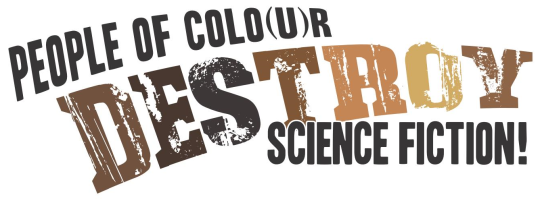FALLING IN LOVE WITH HOMINIDS distances readers from well-worn tropes and techniques

Photo: IRFAN KHAN/GETTY IMAGES
Amber Troska at IT’S A HARDBACK LIFE enjoyed FALLING IN LOVE WITH HOMINIDS, her first Nalo Hopkinson experience.
Nalo Hopkinson’s stories are hybrids, blending science fiction and fantasy, Western and Afro-Caribbean influences, pain and joy, the real and the unreal. She has a particular talent for blending the magical and the mundane in surprising ways.
As a writer of short stories that are specifically fantasy and science fiction, Hopkinson demonstrates her understanding of how a story needs to follow it’s own internal logic to be successful; any outside, novelistic standard of structure or expectation is thrown out the window in favor of internal integrity.

I could draw a lot of comparisons between Hopkinson and other current short story artists– like Kelly Link or Elizabeth Bear– as far as the ideas of internal vs. external logic and the strength of so many different voices, but Hopkinson also has a non-Eurocentric approach that sets her apart and further distances readers from well-worn tropes and techniques. This is my first experience with Nalo Hopkinson, but it certainly won’t be my last.
THE PINOCCHIO THEORY delivers a lengthy, spoiler-rich discussion of the short story “Message in a Bottle,” which appears in FALLING IN LOVE WITH HOMINIDS.
For the reader, the same thing plays out on a metalevel. “Message in a Bottle” takes up the traditional science fiction figuration of extraterrestrial aliens; it shows us how this figuration works in hegemonic groups’ fears of other human beings as aliens; in the way the narrator cannot help seeing children as aliens; and finally in the unassimilability of other (alien) species to our own.
On the WIRED podcast GEEK’S GUIDE TO THE GALAXY, editors Nalo Hopkinson, Nisi Shawl, and Sunil Patel discuss PEOPLE
OF COLO(U)R DESTROY SCIENCE FICTION.
Nalo Hopkinson on her background as a writer:
“I was lucky growing up. I am the daughter of a library technician—my mother—and an actor/poet/playwright/teacher—my father—and living in the Caribbean we were very keyed in to the literature of the region. I knew that people of color could write, and that we could write whatever we wanted to. When I started writing science fiction I did have to do the sort of ‘unhooking’ of my brain. The first story that came to mind was the default kind of fantasy—white people set in some part of Europe—and I sat with it, because it wasn’t making me comfortable, and I completely changed it. But I knew that I could do it, and I’m kind of blessed that way, and it really hurts me when I see people that don’t have that advantage.”

Nalo Hopkinson co-organized the yearlong Alternative Futurisms, an exploration of ethnic futurisms, hosted by the the University of California, Riverside. Previous guest authors have included Daniel José Older and Walter Mosley.
“Throughout 2015-2016, the Sawyer Seminar on Alternative Futurisms is helping to build bridges amongst the various zones of scholarship and creation in people-of-color futurisms and fantastical narratives,” said Nalo Hopkinson, co-organizer of the yearlong seminar, a professor of creative writing and an award-winning author of science fiction and fantasy. “Following a successful fall quarter, which included a conference, film screenings and panel discussions, the winter quarter is focusing on creators of people-of-color science fiction and fantasy.”

Art by John Jennings
Upcoming events include a panel discussion on Caribbean science fiction and fantasy with Karen Lord, Karin Lowachee, Nalo Hopkinson, and Tobias Buckell and readings by Ted Chiang and Charles Yu.
Learn more about Alternative Futurisms at the University of California, Riverside page.

Without comment, the Halifax Public Libraries included FALLING IN LOVE WITH HOMINIDS among their recommended reads for African Heritage Month.
For more information on FALLING IN LOVE WITH HOMINIDS, visit the Tachyon page.
Cover art by Chuma Hill
Design by Elizabeth Story
